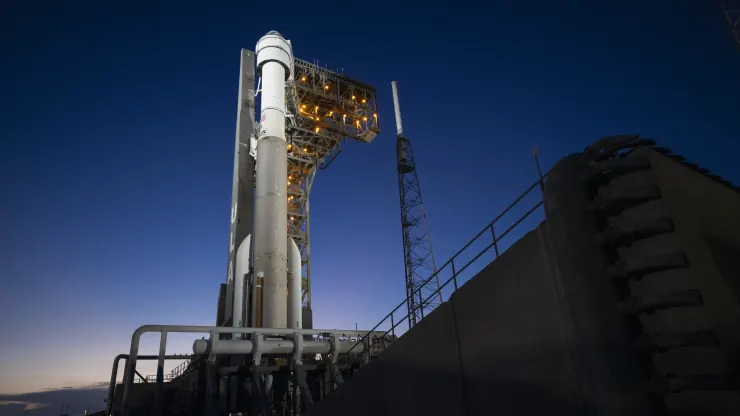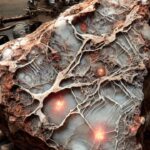Boeing, NASA, Starliner, helium leak, astronaut launch, space exploration, Commercial Crew Program, spacecraft, ISS, human spaceflight
Boeing and NASA have decided to move forward with the Starliner spacecraft’s astronaut launch despite a recent helium leak. Learn about the spacecraft, the leak, the decision-making process, and the implications for future space exploration.

In a significant development for space exploration, Boeing and NASA have announced that the Starliner spacecraft’s astronaut launch will proceed as planned, despite the recent discovery of a helium leak. This decision underscores the commitment of both organizations to advancing human spaceflight and ensuring the success of the Commercial Crew Program. This article delves into the details of the Starliner spacecraft, the nature of the helium leak, the decision-making process behind proceeding with the launch, and the broader implications for the future of space exploration.
The Starliner Spacecraft: A Brief Overview
The Boeing CST-100 Starliner is a crewed spacecraft designed to transport astronauts to the International Space Station (ISS) and other low Earth orbit destinations. Developed as part of NASA’s Commercial Crew Program, the Starliner represents a significant leap in space travel technology, aiming to provide reliable and cost-effective access to space.
The Starliner is designed to accommodate up to seven astronauts and is equipped with advanced safety features, including an autonomous flight control system and a robust abort system to ensure crew safety in case of an emergency. The spacecraft can remain docked to the ISS for up to six months, providing flexibility for various mission profiles.
The Helium Leak: What Happened?
During routine pre-launch testing, engineers discovered a helium leak in the Starliner’s propulsion system. Helium is used in the spacecraft to pressurize the fuel tanks, ensuring that the propellant flows correctly to the engines. The leak, though concerning, was determined to be within manageable limits.
Boeing and NASA immediately initiated a thorough investigation to assess the severity of the leak and its potential impact on the mission. Engineers identified the source of the leak and implemented corrective measures to mitigate any risks associated with it. Despite the presence of the leak, the engineering teams concluded that the spacecraft remained safe for flight.
Decision to Proceed with the Launch
The decision to move forward with the Starliner launch was not made lightly. It involved extensive discussions and reviews by both Boeing and NASA’s technical teams. Key factors considered included the redundancy and robustness of the spacecraft’s systems, the effectiveness of the implemented fixes, and the overall safety of the mission.
NASA’s Commercial Crew Program manager, Steve Stich, emphasized that the decision was based on a comprehensive risk assessment. “We have a high degree of confidence in the Starliner’s systems and the measures taken to address the helium leak,” Stich stated. “Safety is our top priority, and we would not proceed if we had any doubts about the spacecraft’s readiness.”
Boeing’s vice president and program manager for the Commercial Crew Program, John Vollmer, echoed this sentiment, highlighting the rigorous testing and validation processes that the Starliner has undergone. “Our teams have worked tirelessly to ensure that the Starliner is ready for this mission,” Vollmer said. “We are confident in the spacecraft’s performance and excited to move forward with the launch.”
The Implications for Human Spaceflight
The decision to proceed with the Starliner launch despite the helium leak carries significant implications for the future of human spaceflight. It demonstrates a robust and adaptive approach to space mission management, where potential issues are addressed swiftly and effectively without compromising safety.
This incident also highlights the importance of redundancy and resilience in spacecraft design. The Starliner is equipped with multiple systems to ensure mission success even in the face of technical challenges. This approach is crucial for ensuring the safety and reliability of crewed missions, particularly as space exploration missions become more complex and ambitious.
The Role of the Commercial Crew Program
NASA’s Commercial Crew Program plays a pivotal role in fostering innovation and collaboration between the public and private sectors in space exploration. By partnering with companies like Boeing and SpaceX, NASA aims to develop a robust commercial space industry capable of supporting a wide range of missions, from routine ISS resupply to deep space exploration.
The success of the Starliner mission is vital for the Commercial Crew Program, as it will validate the spacecraft’s capabilities and pave the way for future missions. It also underscores the importance of having multiple providers for crewed spaceflight, enhancing the resilience and sustainability of NASA’s human spaceflight endeavors.
Future Missions and Long-Term Goals
Looking ahead, the successful launch and operation of the Starliner spacecraft will open new avenues for human space exploration. Boeing has plans for multiple crewed missions, with the potential to support NASA’s Artemis program, which aims to return humans to the Moon and eventually send astronauts to Mars.
The Starliner could also play a crucial role in developing and supporting commercial space stations, enabling a thriving low Earth orbit economy. These stations could serve as hubs for scientific research, manufacturing, and even tourism, further expanding humanity’s presence in space.
Conclusion
The decision by Boeing and NASA to proceed with the Starliner astronaut launch despite the helium leak reflects a careful balance between managing risks and advancing space exploration. It underscores the resilience and adaptability of modern spacecraft and the rigorous processes in place to ensure mission safety.
As the launch date approaches, the successful deployment and operation of the Starliner will mark a significant milestone in the Commercial Crew Program and pave the way for future crewed missions. It also reaffirms the importance of public-private partnerships in driving innovation and expanding our capabilities in space.
Ultimately, the Starliner mission embodies the spirit of exploration and discovery that has always driven human spaceflight. By overcoming challenges and pushing the boundaries of what is possible, Boeing, NASA, and the broader space community continue to inspire and pave the way for future generations of explorers.
Read More-
- NASA Wildfire Digital Twin: Revolutionizing Fire and Smoke Forecasting with AI
- NASA and Sierra Space Dream Chaser Arrives in Florida for Launch Prep
- NASA and ESA Unite for Historic Rosalind Franklin Mars Rover Mission
- NASA Plan to Build a Railway System on the Moon









